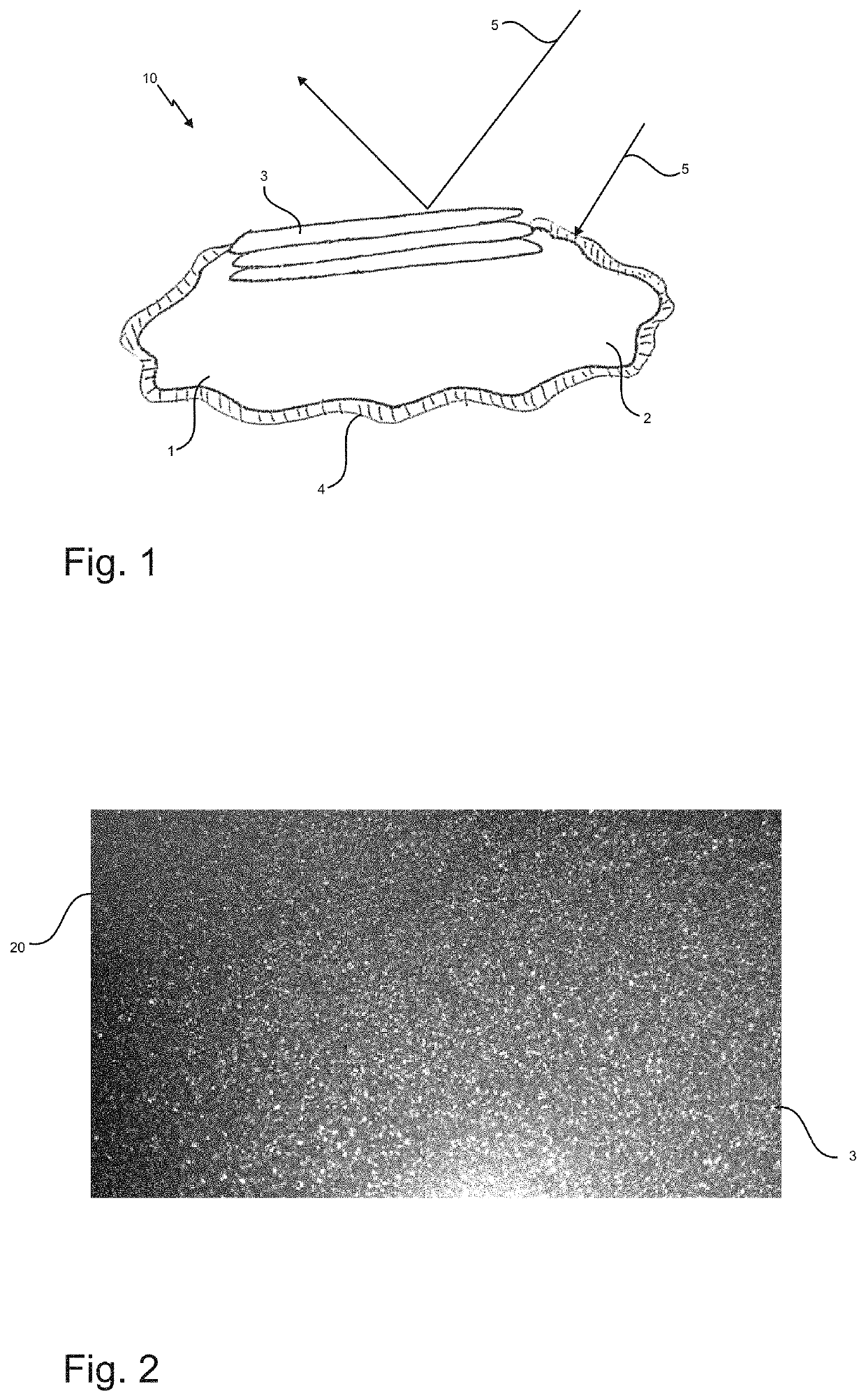Composite particles having hydrophilic and hydrophobic surface coatings
a technology of surface coating and composite particles, applied in the field of composite particles, can solve the problems of limited use of composite particles known so far, damage to the surface of many composite particles, and detachment of pigment particles, etc., and achieve the effect of reducing the proportion of expensive binders, such as resin, and good dispersibility
- Summary
- Abstract
- Description
- Claims
- Application Information
AI Technical Summary
Benefits of technology
Problems solved by technology
Method used
Image
Examples
example
[0052]Mixtures based on coloured quartz are provided for the production of a composite material, as shown by way of example in FIG. 2, which can be used to produce kitchen sinks, for example. Due to the high shear resistance of the composite particle, on the one hand the high shear energies of the compulsory mixer can be withstood, and on the other hand the coated particles are not suctioned away by the dust extraction units due to the reinforcing coating and to the greater weight resulting therefrom. The faultless processibility means that the customer can be provided with complete mixtures. These mixtures can be specifically processed in a casting machine, without being destroyed in the mixing screw.
[0053]To produce a composite particle of this type, the raw material is introduced into a compulsory mixer. In a dry state, 1 mass % of a silver-coloured pigment is added and this is mixed into the raw material for one minute. Thereafter, 3 mass % of a sodium soluble glass are added an...
PUM
| Property | Measurement | Unit |
|---|---|---|
| grain size | aaaaa | aaaaa |
| grain size | aaaaa | aaaaa |
| grain size | aaaaa | aaaaa |
Abstract
Description
Claims
Application Information
 Login to View More
Login to View More - R&D
- Intellectual Property
- Life Sciences
- Materials
- Tech Scout
- Unparalleled Data Quality
- Higher Quality Content
- 60% Fewer Hallucinations
Browse by: Latest US Patents, China's latest patents, Technical Efficacy Thesaurus, Application Domain, Technology Topic, Popular Technical Reports.
© 2025 PatSnap. All rights reserved.Legal|Privacy policy|Modern Slavery Act Transparency Statement|Sitemap|About US| Contact US: help@patsnap.com

